Chrysopogon pallidus
R.Br.
Golden Beard Grass
Ribbon Grass
Blade Grass
Razor Grass
This grass is an erect tufted deep rooted perennial, between 100-150 cm high (Fig. 1a). The narrow leaves are mostly basal with leaf sheaths tightly overlapping and forming a fibrous base (Fig. 1b). The basic flowering units or spikelets are arranged in clusters in an open inflorescence or flowering head. The branches of the flowering head are arranged in several whorls along a central stem, each whorl with branches arising from the stem like the spokes of a wheel (Fig. 2). There is usually 1 spikelet cluster on each branch of the whorl. The spikelet clusters consist of a sessile spikelet which has a prominent twisted awn or bristle, 42-70 mm long, and a tuft of often golden hairs on the sharp tipped base (callus), and two spikelets on short stalks or pedicels, male, with a short awn (Fig. 3).
Botanical Description
A perennial grass with culms 100-150 cm high (Fig. 1a). Rhizomatous, with the rhizome often shallowly constricted into short segments and usually pale yellow in colour (Fig. 4). Leaf sheaths tightly overlapping and forming a distinct white to pale yellow fibrous base (Fig. 1b). Leaf blades held erect, conduplicate or convolute, 20-40 cm long, 3-6 mm wide, papillose, glabrous or indumented. The inflorescence is an open panicle, comprised of numerous racemes or spike like branches arranged in whorls along a central stem (Fig. 2). Spikelets are arranged in clusters of three along each branch, each branch up to 6 cm long, with usually 1 spikelet cluster per branch. Each spikelet cluster consists of a prominent sessile spikelet and two pedicelled spikelets, male (Fig. 3). The sessile spikelets are 10-13 mm long and are conspicuously awned, the awn 42-70 mm long with a twisted column, the pedicelled spikelets are usually 11-14 mm long and shortly awned.
Diagnostic Features
Species of this genus that occur in Cape York Peninsula can be identified when flowering by the whorled branches of the open panicle (Fig. 2), the awned sessile spikelet and the spikelet clusters occurring with one sessile spikelet and one or two stalked or pedicelled spikelets (Fig. 3). This species can be difficult to separate from other species within the genus but with careful examination of the inflorescence it is distinguished by the combination of the following characters, the deep rooted habit and fibrous leaf base, the number of spikelet clusters per branch of inflorescence usually 2 or 3, the two companion spikelets and the narrow leaf blades < 1 cm wide. It is most likely to be confused with Chrysopogon fallax but can be distinguished from that species by the larger callus or tip at the base of the sessile spikelet or seed and the longer awn on the sessile spikelet, see notes under C. fallax for comparison. Spear grass species from the genus Sorghum/Sarga although usually easily recognisable may cause confusion as they have a similar inflorescence structure to Chrysopogon, with branches of the inflorescence often in whorls and spikelets in clusters or pairs of awned sessile spikelets and stalked spikelets. The common spear grass species in the region have generally more robust spikelets, longer awns and quite pungent tips on the end of the sessile spikelet which spear into clothing (see figures under C. filipes).
Natural Values
A rhizomatous deep rooted perennial probably useful in stabilising soils, providing habitat for fauna, and seed for granivorous species.
Habitat
Widespread throughout tropical areas of Australia, although a few collections extend into the arid zones of northern Australia; often found in sandy soils.
Land Management Notes
This species is likely to have similar pasture value to C. fallax with some forage value when shoots are young and green, considered resistant to drought and heavy grazing. (Simon 1992, Simon & Alfonso 2011).
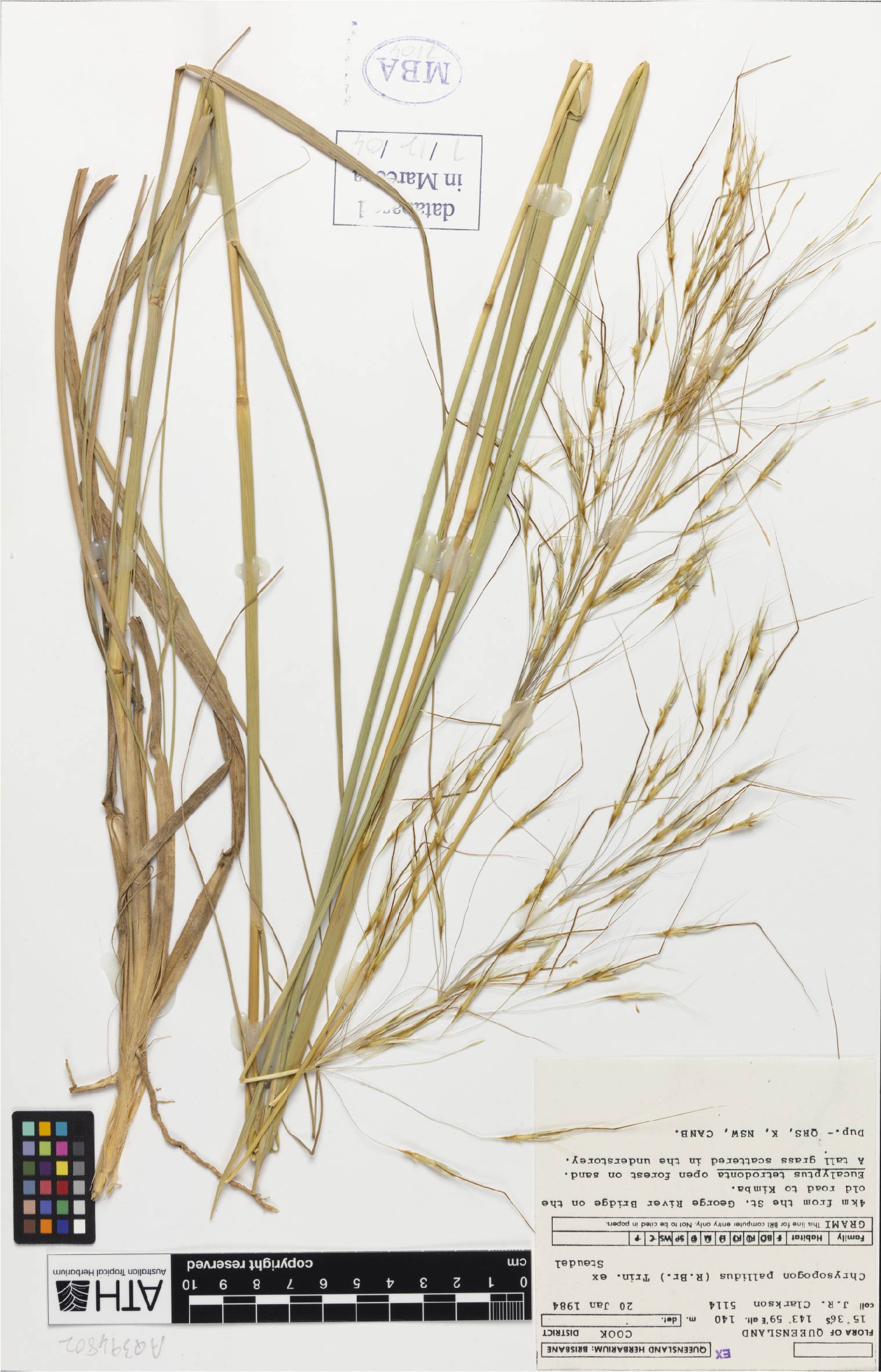
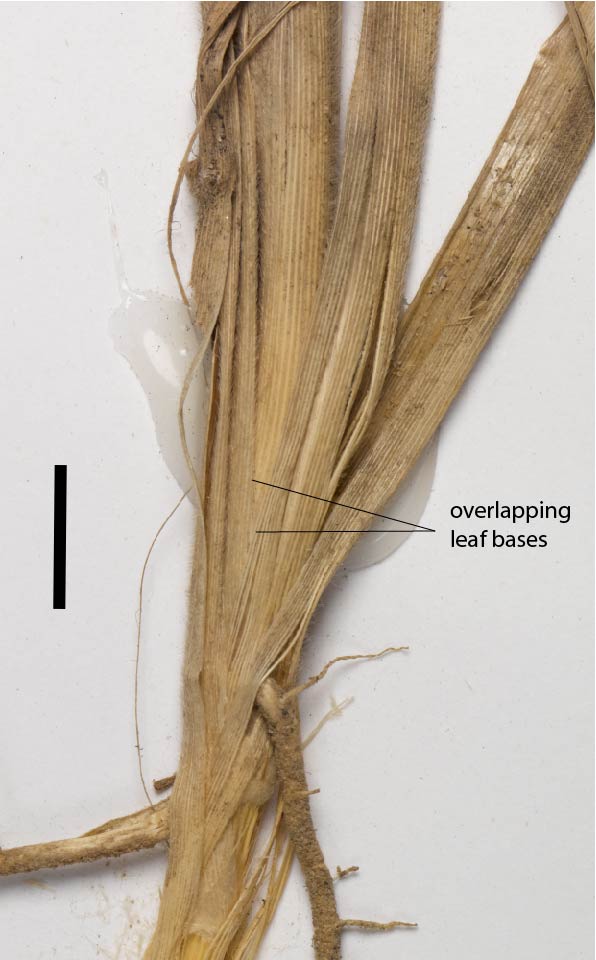
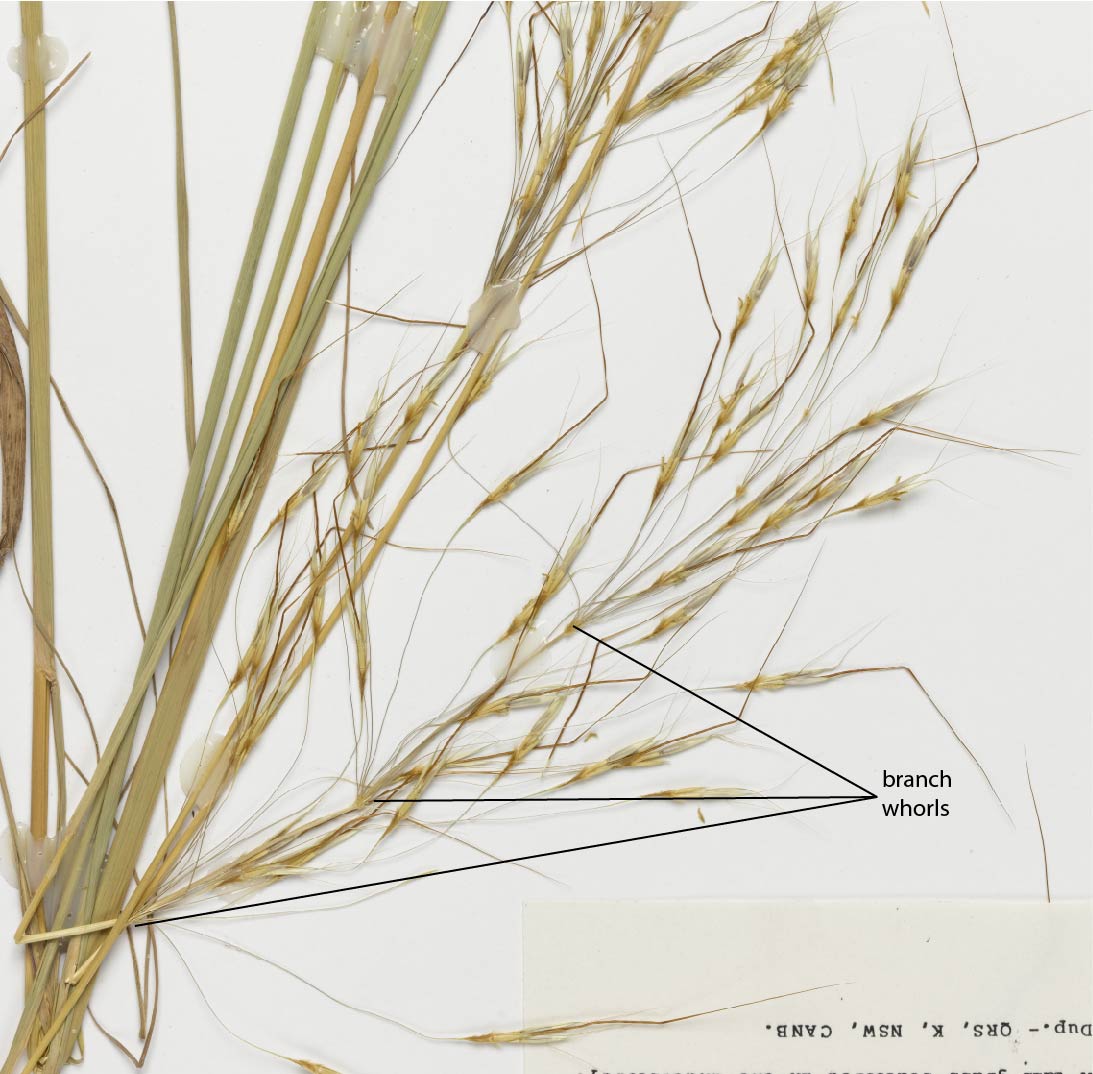
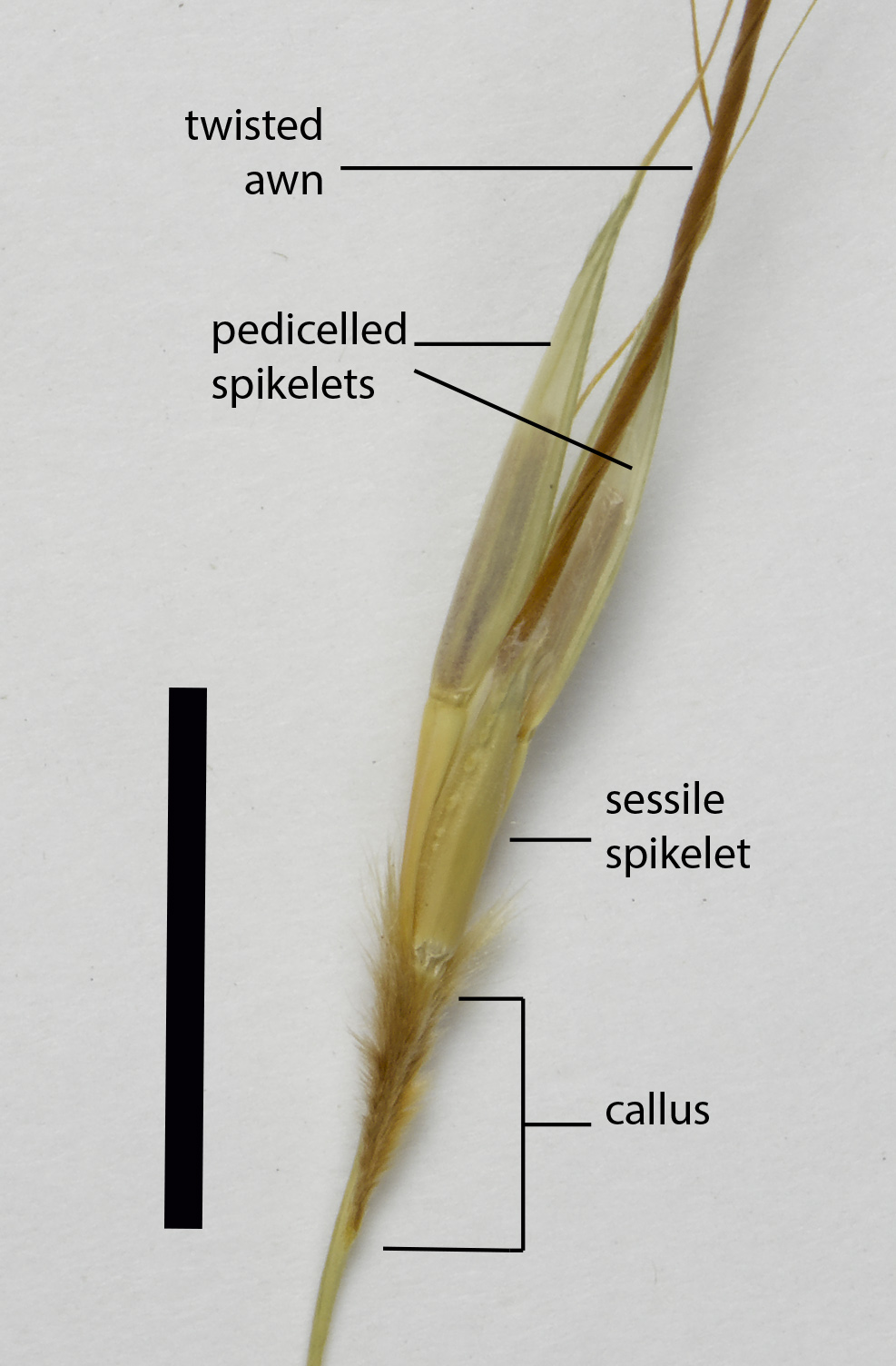
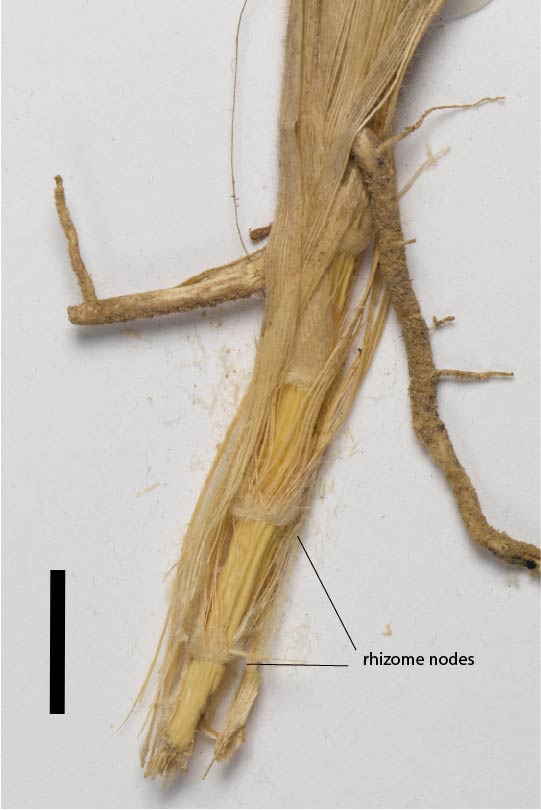
Resources
AVH (2017) Australia’s Virtual Herbarium, Council of Heads of Australasian Herbaria, <http://avh.chah.org.au>, accessed 30 May 2017.
Lazarides, M. (2002) Economic attributes of Australian grasses. Flora of Australia 43: 213-245.
Sharp, D. & Simon, B.K. (2002) Ausgrass: Grasses of Australia. CD-Rom. Version 1.0 (Australian Biological Resources Study, Canberra, and Environmental Protection Authority, Queensland).
Simon, B.K. (1992) Chrysopogon. In J.R. Wheeler (ed), B.L. Rye, B.L. Koch & A.J.G. Wilson. Flora of the Kimberley Region. (Western Australian Herbarium, Dept. of Conservation and Land Management Como, W.A.), pp. 1141-1142.
Simon, B.K. & Alfonso, Y. (2011) AusGrass2, http://ausgrass2.myspecies.info/accessed on [date 29 March 2017]

